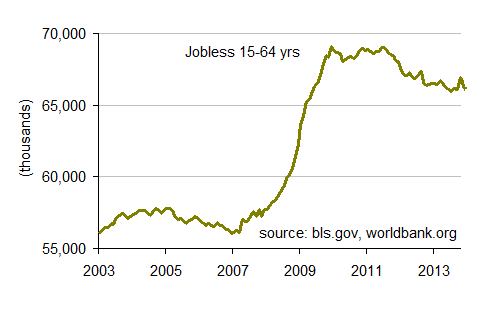- Banned
- #1
George Will: If Work Participation Rate Was Same As 2007, Unemployment Would Be 11.3%
George Will: If Work Participation Rate Was Same As 2007, Unemployment Would Be 11.3% | Video | RealClearPolitics
GEORGE WILL: The people are right, the two-thirds that think the economy is not good. The recession began in December 2007. Since then, we have added 13 more million Americans in the country and we have 1.3 million fewer jobs. We have lowered the unemployment rate largely, not entirely, but largely because work force participation rate has gone down as more and more workers have been discouraged and are no longer counted anymore because they're not looking for work. If the work force participation rate today was as high as it was when the recession began, the unemployment rate would be 11.3%. We wouldn't be calling it a poor recovery because it wouldn't be called a recovery at all.
George Will: If Work Participation Rate Was Same As 2007, Unemployment Would Be 11.3% | Video | RealClearPolitics



